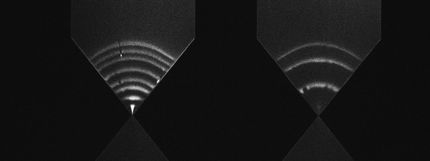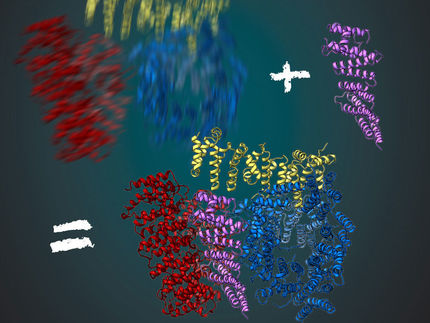Network Filtering in Biobanks: Protective Protein against Huntington’s Disease Identified
While seeking targets to attack Huntington’s disease, an incurable inherited neurodegenerative disorder, neurobiologists of the research group of Professor Erich Wanker (Max Delbrück Center) found what they were looking for. Using a filtering strategy borrowed from criminologists, they systematically filtered interaction networks of various biological databases until they found the protein CRMP1. In subsequent lab experiments they showed that it acts like a “chaperone”, ensuring that the protein huntingtin (HTT) behaves correctly and does not misfold or clump. Dysregulated modulation of HTT by CRMP1 is regarded as a causal mechanism of Huntington’s disease.
Huntington's disease, historically referred to as St. Vitus' dance, was discovered in 1872 by the American physician George Huntington. It is a rare, incurable hereditary disease (6:100 000), which usually appears in middle adulthood. The affected individuals suffer from uncontrollable jerking movements, dementia and psychiatric disorders. Death occurs about 15 years after onset of the disease. For children of an affected parent, the risk of also having Huntington's disease is 50 percent. The gene for the HTT protein is located on chromosome 4. If it is mutated, the protein is also altered.
Characteristic of the toxic HTT protein is an elongated sequence of 40 and more glutamine building blocks (glutamine is one of the amino acid building blocks for proteins). These assemblies of huntingtin (HTT) fragments with expanded polyglutamine (polyQ) tracts are regarded as a cause for the development of Huntington’s disease.
How to master the flood of data?
The objective of the research project of Professor Wanker and his colleagues was to find proteins that interact with the huntingtin protein (HTT) and prevent its misfolding, clumping, functional neuronal impairment and neurotoxicity. To start off, the researchers asked themselves: “How can we extract the information we are seeking from the various gene and protein databases? Among the thousands of proteins and additional thousands of protein-protein interactions, how can we filter out those that interact with the mutated protein HTT and in particular with the elongated glutamine sequence?”
When we use a search engine we enter a certain term for which the system returns loads of data. But in the case of this research project, this was not feasible because the MDC researchers wanted to avoid drowning in a flood of data from various biodatabases. That is why they decided to use a computational network filtering procedure in which information from different areas is linked to each other in a step by step process.
In order to limit their search, Dr. Martin Stroedicke, Dr. Yacine Bounab, Dr. Gautam Chaurasia, Dr. Matthias Futschik and Professor Wanker made use of research findings from previous studies on Huntington’s disease. In this disease, the brain regions that are mainly affected have to do with movement (motor skills) as well as moods and feelings. One region in particular, the caudate nucleus, is massively affected in Huntington’s disease; most of the movement disorders – and the most severe ones – arise from this region.
The idea was first to construct a protein network around the protein HTT in order to identify its direct and indirect “cooperation partners”. For this purpose, the MDC researchers scoured previously published gene and protein data of the candidate regions of the brain, both of Huntington patients and healthy controls. In doing so, they identified 1319 protein interactions and discovered among them more than 500 proteins that interact directly or indirectly with the protein HTT.
In a second step, they searched for HTT interaction partners in healthy brains and in other body tissues to filter out only the proteins that are relevant for the brain. Next, they narrowed down the search in the third step to the most affected region in Huntington's disease, thethe caudate nucleus. They compared the data of 38 patients with Huntington’s disease with data from 32 healthy controls. During this process they discovered 13 proteins that interact directly or indirectly with the HTT protein. Strikingly, in the patients with Huntington’s disease these 13 proteins are present in smaller amounts than in the control group.
Too little of the protective protein CMRP1 in patients with Huntington’s disease
In the third step, the MDC researchers succeeded in filtering one protein among these 13 proteins that directly targets the elongated glutamine sequence of the HTT protein. This protein, abbreviated CRMP1 (for collapsin response mediator protein 1), plays a key role in the development of nerve cells and their communication. On the basis of the data, the researchers were able to determine that this protective protein CRMP1 occurs in Huntington's disease patients in too small amounts.
Findings verified in the laboratory
The findings the researchers gained by filtering the databases were then tested in cell culture in the laboratory and with transgenic mice – they additionally carry the gene for Huntington’s disease in their genome – and healthy mice. This confirmed what the findings of the databases had already indicated, namely that the quantity of CRMP1 protein in the transgenic animals in comparison to the healthy mice was in fact very low. It is unclear, however, why this is so.
The next question was then whether the protein CRMP1 has an effect on the mutant HTT protein. Because there is too little of this protein in Huntington’s disease, by means of a genetic trick the researchers accelerated the production of the protein CRMP1 in transgenic Huntington fruit flies (Drosophila melanogaster). Climbing experiments showed that CRMP1 in fact improved the movement disorders of the animals.
No therapy yet
By means of these animal studies, the MDC researchers were able to demonstrate experimentally that CRMP1 in larger quantities eliminates the malfunction of HTT. It prevents the aggregation of HTT, thus improving the function of nerve cells in Huntington's disease. “With the filtering of molecular interaction networks, we have developed a simple but effective method to identify those proteins that interact directly with the disease-causing protein HTT,” said Professor Wanker.
In addition to this newly discovered protein there are now also other proteins that could serve as targets for future therapies and which the researchers could include in their network. They hope their findings will help develop a therapy for Huntington’s disease. “But that will still take many years,” Prof. Wanker pointed out.




















































